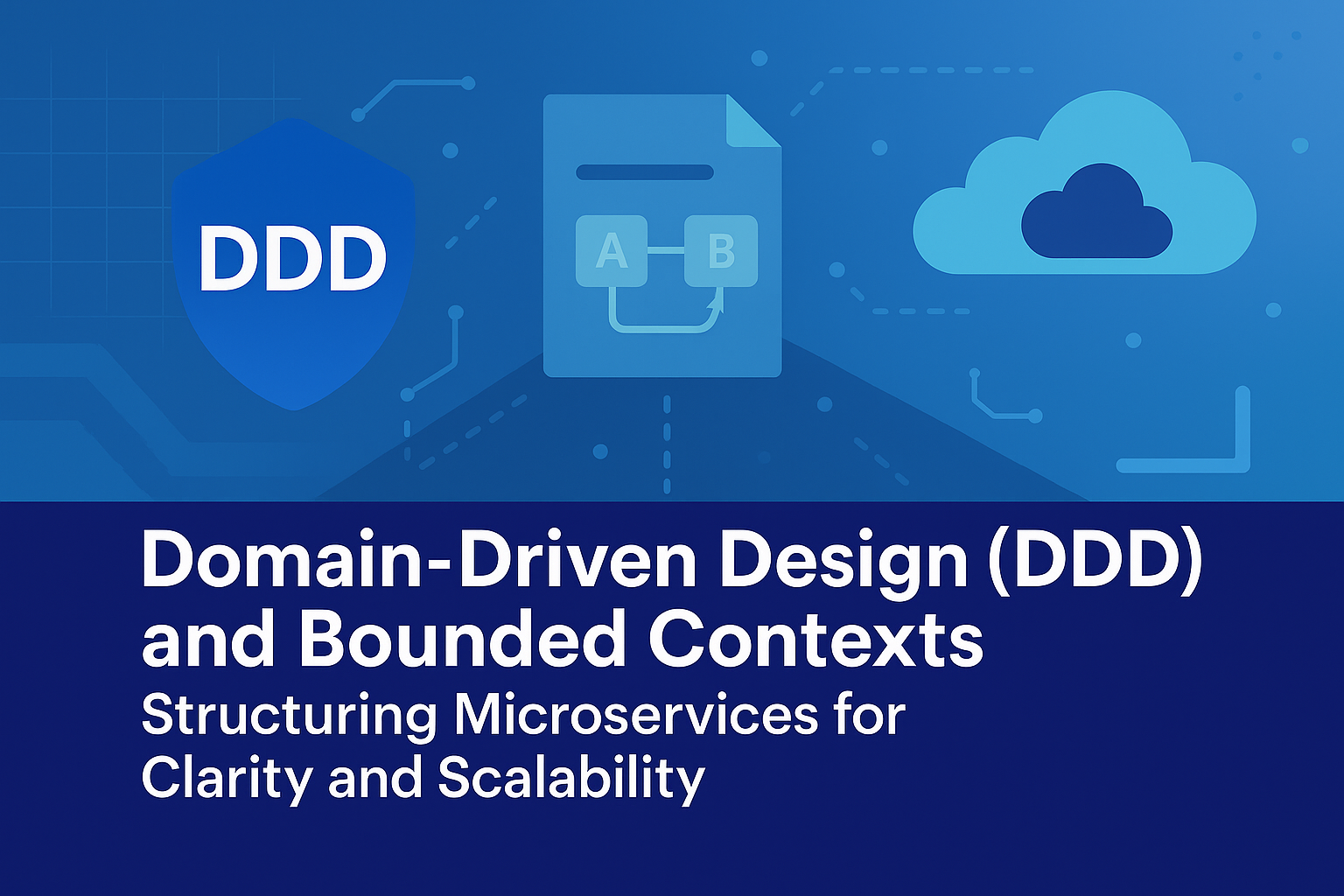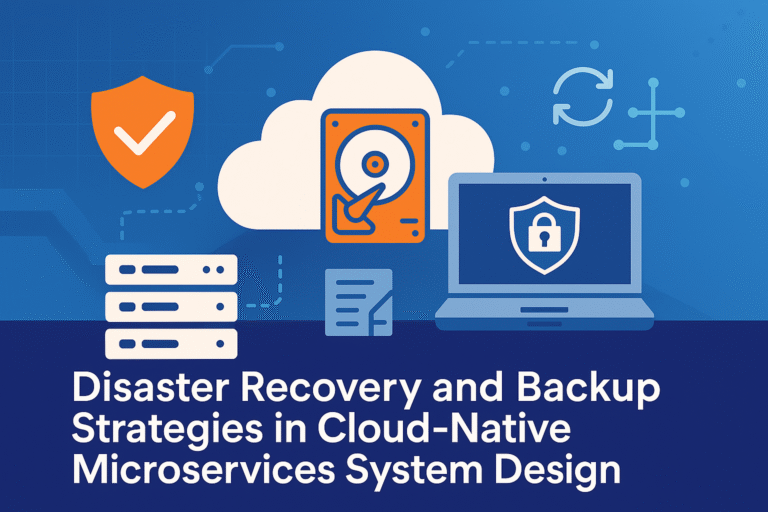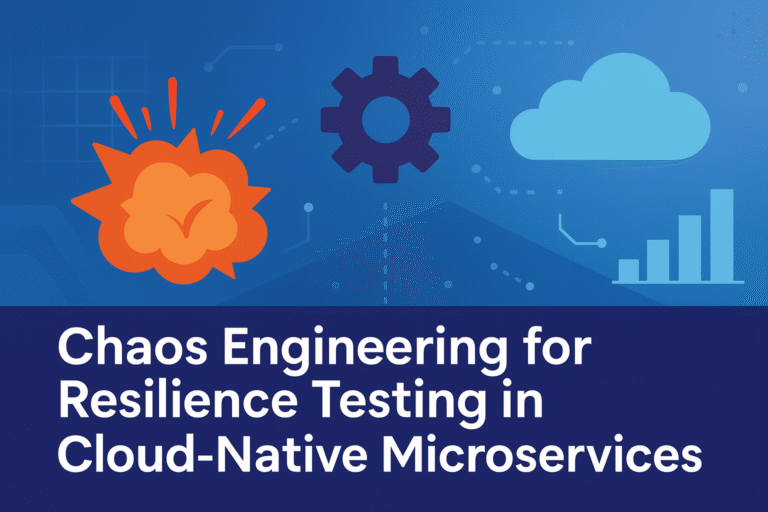Introduction
Domain-Driven Design (DDD) is a software development approach that emphasizes modeling software around the business domain, fostering close collaboration between technical and domain experts to create systems that are maintainable, scalable, and aligned with business needs. In microservices architectures, DDD provides a structured framework to design services by breaking down complex domains into manageable Bounded Contexts, each encapsulating a specific subset of the domain with its own model, language, and boundaries. This approach ensures loose coupling, independent evolution, and alignment with business capabilities, addressing challenges like distributed data management and inter-service communication. This comprehensive analysis explores DDD and Bounded Contexts in the context of microservices, detailing their principles, mechanisms, implementation strategies, advantages, limitations, and real-world applications. It integrates foundational distributed systems concepts from your prior conversations, including the CAP Theorem (balancing consistency, availability, and partition tolerance), consistency models (strong vs. eventual), consistent hashing (for load distribution), idempotency (for reliable operations), unique IDs (e.g., Snowflake for tracking), heartbeats (for liveness), failure handling (e.g., circuit breakers, retries, dead-letter queues), single points of failure (SPOFs) avoidance, checksums (for data integrity), GeoHashing (for location-aware routing), rate limiting (for traffic control), Change Data Capture (CDC) (for data synchronization), load balancing (for resource optimization), quorum consensus (for coordination), multi-region deployments (for global resilience), capacity planning (for resource allocation), backpressure handling (to manage load), exactly-once vs. at-least-once semantics (for event delivery), event-driven architecture (EDA) (for loose coupling), microservices design best practices, inter-service communication, data consistency, deployment strategies, and testing strategies. Drawing on your interest in e-commerce integrations, API scalability, resilient systems, and prior queries (e.g., saga patterns, EDA, and testing), this guide provides a structured framework for architects to apply DDD and Bounded Contexts to design robust microservices, with C# code examples as per your preference.
Core Principles of Domain-Driven Design (DDD)
DDD focuses on creating software that reflects the business domain through:
- Domain Modeling: Building a model that captures business concepts, rules, and processes (e.g., orders, payments in e-commerce).
- Ubiquitous Language: A shared vocabulary between developers and domain experts to ensure clarity (e.g., “OrderPlaced” means the same in code and business discussions).
- Bounded Contexts: Dividing the domain into smaller, well-defined contexts with distinct models and boundaries.
- Entities and Aggregates: Modeling domain objects (entities) with unique identities (e.g., Order with ID) and grouping them into aggregates with consistent boundaries.
- Domain Events: Capturing significant state changes (e.g., “OrderPlaced”) for communication, aligning with your EDA query.
- Strategic Design: Aligning services with business capabilities to ensure scalability and maintainability.
Mathematical Foundation:
- Complexity Reduction: Complexity∝domain_sizecontext_count \text{Complexity} \propto \frac{\text{domain\_size}}{\text{context\_count}} Complexity∝context_countdomain_size, e.g., splitting a domain into 5 contexts reduces complexity by ~80%.
- Consistency Overhead: Overhead=sync_time×context_count \text{Overhead} = \text{sync\_time} \times \text{context\_count} Overhead=sync_time×context_count, e.g., 10ms sync × 5 contexts = 50ms.
- Scalability: Throughput scales with independent contexts, e.g., Throughput=N×Tc \text{Throughput} = N \times T_c Throughput=N×Tc, where N N N is contexts and Tc T_c Tc is context throughput (e.g., 5 contexts × 20,000 req/s = 100,000 req/s).
Bounded Contexts in DDD
Definition
A Bounded Context is a specific boundary within which a domain model and its ubiquitous language are consistent and unambiguous. Each context defines a scope where terms, entities, and rules have clear meanings, avoiding conflicts with other contexts. In microservices, each Bounded Context typically maps to one or more services, ensuring loose coupling and independent evolution.
- Key Characteristics:
- Single Model: Each context has its own domain model (e.g., “Order” in Order context vs. “Order” in Shipping context).
- Clear Boundaries: Defines what is included/excluded (e.g., Order context handles creation, not shipping).
- Ubiquitous Language: Context-specific terminology (e.g., “Order” as a purchase vs. a delivery instruction).
- Integration: Contexts communicate via APIs (e.g., REST, gRPC) or events (e.g., Kafka), as per your inter-service communication query.
- Data Ownership: Each context owns its database (e.g., PostgreSQL for Orders, DynamoDB for Inventory).
- Integration with Concepts:
- CAP Theorem: Contexts favor AP (availability and partition tolerance) with eventual consistency for scalability, or CP (consistency and partition tolerance) for critical operations, as per your CAP query.
- Consistency Models: Eventual consistency via events (e.g., Kafka), strong consistency via synchronous APIs (e.g., gRPC).
- Idempotency: Ensures safe event handling (e.g., Snowflake IDs).
- Failure Handling: Uses circuit breakers, retries, and DLQs for inter-context communication.
- GeoHashing: Routes context-specific events (e.g., regional orders).
- Multi-Region: Deploys contexts independently for low latency (< 50ms).
Example
In an e-commerce system:
- Order Context: Manages order creation, pricing, and validation (PostgreSQL).
- Payment Context: Handles payment processing and refunds (Redis).
- Inventory Context: Tracks stock levels and reservations (DynamoDB).
- Shipping Context: Manages delivery logistics (MongoDB).
Each context has its own model and database, communicating via events (e.g., “OrderPlaced”) or APIs (e.g., /v1/payments), ensuring loose coupling.
Mechanisms of DDD and Bounded Contexts
1. Domain Modeling
- Entities: Objects with unique identities (e.g., Order with OrderId).
- Aggregates: Groups of entities with a single root (e.g., Order aggregate includes Order and OrderItems).
- Repositories: Interfaces for data access (e.g., IOrderRepository for PostgreSQL).
- Domain Events: Capture state changes (e.g., OrderPlacedEvent).
- Services: Handle cross-entity logic (e.g., OrderService validates orders).
2. Bounded Context Patterns
- Context Mapping: Defines relationships between contexts:
- Customer/Supplier: One context (e.g., Order) depends on another (e.g., Inventory).
- Conformist: Downstream context accepts upstream’s model (e.g., Payment accepts Order’s schema).
- Anti-Corruption Layer (ACL): Translates incompatible models (e.g., convert Shopify’s order format to internal Order model).
- Shared Kernel: Common model subset (e.g., shared Address model).
- Communication: Uses REST, gRPC, or messaging (Kafka), as per your inter-service communication query.
- Data Consistency: Implements sagas or event sourcing for eventual consistency, as per your data consistency query.
3. Implementation Steps
- Identify business subdomains (e.g., Ordering, Payments).
- Define Bounded Contexts with ubiquitous language (e.g., “Order” as purchase in Ordering context).
- Model entities, aggregates, and events within each context.
- Implement services and repositories in C#.
- Integrate contexts via APIs or events, using CDC for data sync.
- Deploy contexts as microservices on Kubernetes, aligning with your deployment strategies query.
Detailed Analysis of DDD and Bounded Contexts
Advantages
- Clarity: Ubiquitous language reduces ambiguity (e.g., 20% fewer miscommunications).
- Loose Coupling: Independent contexts enable autonomous development and deployment, aligning with your microservices design query.
- Scalability: Contexts scale independently (e.g., 100,000 req/s across 5 contexts).
- Maintainability: Smaller models simplify maintenance (e.g., 30% less code complexity).
- Alignment with Business: Reflects business capabilities, improving stakeholder collaboration.
Limitations
- Complexity: Initial DDD setup requires significant effort (e.g., 20–30% more design time).
- Learning Curve: Teams need DDD expertise (e.g., 10–15% training overhead).
- Integration Overhead: Context communication adds latency (e.g., 10–50ms for event propagation).
- Data Duplication: Contexts may replicate data (e.g., Order data in Payment context), increasing storage costs (e.g., $0.05/GB/month).
Trade-Offs
- Complexity vs. Clarity:
- Trade-Off: DDD adds design complexity but ensures clear domain models.
- Decision: Use DDD for complex domains (e.g., e-commerce), simpler patterns for basic apps.
- Interview Strategy: Propose DDD for large-scale systems like Amazon.
- Scalability vs. Consistency:
- Trade-Off: Eventual consistency enables scalability but risks staleness (10–100ms).
- Decision: Use sagas for scalable workflows, synchronous APIs for strong consistency.
- Interview Strategy: Highlight sagas for order processing, gRPC for payments.
- Development Speed vs. Maintainability:
- Trade-Off: DDD slows initial development but reduces long-term maintenance.
- Decision: Apply DDD for long-lived systems, avoid for short-term projects.
- Interview Strategy: Justify DDD for enterprise apps, CRUD for prototypes.
- Cost vs. Resilience:
- Trade-Off: Multiple databases increase costs but enhance resilience.
- Decision: Use DDD for high-availability apps, monolithic DBs for cost-sensitive.
- Interview Strategy: Propose DDD for global e-commerce, single DB for startups.
Integration with Prior Concepts
- CAP Theorem: Bounded Contexts favor AP for scalability (eventual consistency via Kafka) or CP for critical operations (synchronous gRPC), as per your CAP query.
- Consistency Models: Eventual consistency via events, strong via APIs, as per your data consistency query.
- Consistent Hashing: Distributes context traffic (e.g., Kafka partitions, NGINX).
- Idempotency: Ensures safe event handling (e.g., Snowflake IDs).
- Heartbeats: Monitors context health (< 5s detection).
- Failure Handling: Uses circuit breakers, retries, and DLQs, as per your failure handling query.
- SPOFs: Avoided via replication (e.g., 3 Kafka brokers).
- Checksums: SHA-256 ensures data integrity.
- GeoHashing: Routes context-specific events (e.g., regional orders).
- Rate Limiting: Caps traffic (e.g., 100,000 req/s).
- CDC: Syncs data across contexts (e.g., Debezium), as per your data consistency query.
- Load Balancing: Distributes context workload (e.g., NGINX).
- Quorum Consensus: Ensures broker reliability (e.g., Kafka KRaft).
- Multi-Region: Deploys contexts globally (< 50ms latency).
- Backpressure: Manages event load in contexts (e.g., buffering).
- EDA: Drives context integration via events, as per your EDA query.
- Saga Patterns: Coordinates cross-context workflows, as per your saga query.
- Deployment Strategies: Supports Blue-Green/Canary for contexts, as per your deployment query.
- Testing Strategies: Uses unit, integration, and contract tests for contexts, as per your testing query.
Real-World Use Cases
1. E-Commerce Order Processing
- Context: An e-commerce platform (e.g., Shopify, Amazon integration, as per your query) processes 100,000 orders/day, needing scalability and loose coupling.
- Bounded Contexts:
- Order Context: Manages order creation (PostgreSQL, REST API).
- Payment Context: Processes payments (Redis, gRPC).
- Inventory Context: Tracks stock (DynamoDB, Kafka consumer).
- Implementation:
- Order Context publishes “OrderPlaced” to Kafka (20 partitions, at-least-once semantics).
- Payment and Inventory Contexts consume events, using CDC for sync and idempotency for deduplication.
- Anti-Corruption Layer translates Shopify’s order format.
- Metrics: < 10ms event latency, 100,000 req/s, 99.999% uptime.
- Trade-Off: Scalability via events, complexity in integration.
- Strategic Value: Loose coupling enables independent scaling during sales.
2. Financial Transaction System
- Context: A bank processes 500,000 transactions/day, requiring strong consistency, as per your tagging system query.
- Bounded Contexts:
- Transaction Context: Manages transaction processing (PostgreSQL, gRPC).
- Ledger Context: Maintains financial records (SQL Server).
- Implementation:
- Transaction Context uses gRPC for synchronous calls to Ledger Context, ensuring strong consistency.
- Saga orchestrator coordinates transactions, as per your saga query.
- Metrics: 50ms latency, 10,000 tx/s, 99.999% uptime.
- Trade-Off: Strong consistency limits scalability but ensures correctness.
- Strategic Value: Critical for compliance and accuracy.
3. IoT Sensor Monitoring
- Context: A smart city processes 1M sensor readings/s, needing real-time analytics, as per your EDA query.
- Bounded Contexts:
- Sensor Context: Collects sensor data (Pulsar, MongoDB).
- Analytics Context: Aggregates data (Redis, Pulsar consumer).
- Implementation:
- Sensor Context publishes “SensorData” to Pulsar (100 segments, at-least-once semantics).
- Analytics Context uses GeoHashing for routing, event sourcing for state reconstruction.
- Metrics: < 10ms latency, 1M events/s, 99.999% uptime.
- Trade-Off: Eventual consistency enables scalability, risks staleness.
- Strategic Value: Supports real-time insights with extensible contexts.
Implementation Guide
// OrderContext/Models/Order.cs
using System;
namespace OrderContext.Models
{
public class Order
{
public string OrderId { get; private set; } // Snowflake ID
public double Amount { get; private set; }
public DateTime CreatedAt { get; private set; }
public Order(string orderId, double amount)
{
OrderId = orderId;
Amount = amount;
CreatedAt = DateTime.UtcNow;
}
}
public class OrderPlacedEvent
{
public string EventId { get; set; } // Snowflake ID
public string OrderId { get; set; }
public double Amount { get; set; }
public DateTime Timestamp { get; set; }
}
}
// OrderContext/Services/OrderService.cs
using System.Threading.Tasks;
using Confluent.Kafka;
namespace OrderContext.Services
{
public class OrderService
{
private readonly IOrderRepository _repository;
private readonly IProducer<Null, string> _kafkaProducer;
public OrderService(IOrderRepository repository, IProducer<Null, string> kafkaProducer)
{
_repository = repository;
_kafkaProducer = kafkaProducer;
}
public async Task CreateOrderAsync(Order order)
{
// Validate order (domain logic)
if (order.Amount <= 0) throw new ArgumentException("Amount must be positive");
// Persist to PostgreSQL
await _repository.SaveAsync(order);
// Publish event to Kafka
var @event = new OrderPlacedEvent
{
EventId = Guid.NewGuid().ToString(), // Snowflake ID in production
OrderId = order.OrderId,
Amount = order.Amount,
Timestamp = DateTime.UtcNow
};
await _kafkaProducer.ProduceAsync("orders", new Message<Null, string>
{
Value = System.Text.Json.JsonSerializer.Serialize(@event)
});
}
}
public interface IOrderRepository
{
Task SaveAsync(Order order);
}
}
// PaymentContext/Services/PaymentService.cs
using System.Threading.Tasks;
using Confluent.Kafka;
namespace PaymentContext.Services
{
public class PaymentService
{
private readonly IConsumer<Null, string> _consumer;
private readonly IPaymentRepository _repository;
public PaymentService(IConsumer<Null, string> consumer, IPaymentRepository repository)
{
_consumer = consumer;
_repository = repository;
_consumer.Subscribe("orders");
}
public async Task ProcessPaymentsAsync(CancellationToken cancellationToken)
{
while (!cancellationToken.IsCancellationRequested)
{
var result = _consumer.Consume(cancellationToken);
var @event = System.Text.Json.JsonSerializer.Deserialize<OrderPlacedEvent>(result.Message.Value);
// Idempotency check
if (await _repository.IsProcessedAsync(@event.EventId)) continue;
// Process payment (domain logic)
var payment = new Payment(@event.OrderId, @event.Amount);
await _repository.SaveAsync(payment);
// Publish PaymentProcessed event
// Implementation omitted for brevity
}
}
}
public class Payment
{
public string PaymentId { get; private set; }
public string OrderId { get; private set; }
public double Amount { get; private set; }
public Payment(string orderId, double amount)
{
PaymentId = Guid.NewGuid().ToString(); // Snowflake ID
OrderId = orderId;
Amount = amount;
}
}
public interface IPaymentRepository
{
Task SaveAsync(Payment payment);
Task<bool> IsProcessedAsync(string eventId);
}
}
// AntiCorruptionLayer/ShopifyOrderAdapter.cs
namespace AntiCorruptionLayer
{
public class ShopifyOrderAdapter
{
public OrderContext.Models.Order ToInternalOrder(dynamic shopifyOrder)
{
// Translate Shopify's order format to internal model
return new OrderContext.Models.Order(
orderId: shopifyOrder.id.ToString(),
amount: (double)shopifyOrder.total_price
);
}
}
}Deployment Configuration (docker-compose.yml)
// Deployment Configuration (docker-compose.yml)
# docker-compose.yml
version: '3.8'
services:
order-service:
image: order-service:latest
environment:
- KAFKA_BOOTSTRAP_SERVERS=kafka:9092
- POSTGRES_CONNECTION=Host=postgres;Database=orders;Username=user;Password=pass
depends_on:
- kafka
- postgres
payment-service:
image: payment-service:latest
environment:
- KAFKA_BOOTSTRAP_SERVERS=kafka:9092
- REDIS_CONNECTION=redis:6379
depends_on:
- kafka
- redis
kafka:
image: confluentinc/cp-kafka:latest
environment:
- KAFKA_NUM_PARTITIONS=20
- KAFKA_REPLICATION_FACTOR=3
- KAFKA_RETENTION_MS=604800000
postgres:
image: postgres:latest
environment:
- POSTGRES_DB=orders
- POSTGRES_USER=user
- POSTGRES_PASSWORD=pass
redis:
image: redis:latestImplementation Details
- Order Context:
- Models: Order entity, OrderPlacedEvent for EDA.
- Service: OrderService validates and publishes events to Kafka.
- Database: PostgreSQL for persistence.
- Payment Context:
- Models: Payment entity, consumes OrderPlacedEvent.
- Service: PaymentService processes payments with idempotency.
- Database: Redis for low-latency access (< 0.5ms).
- Anti-Corruption Layer: Translates Shopify’s order format to internal model.
- Deployment: Kubernetes with 10 pods/context (4 vCPUs, 8GB RAM), Kafka on 5 brokers (16GB RAM, SSDs).
- Monitoring: Prometheus for latency (< 50ms), throughput (100,000 req/s), and availability (99.999%).
- Security: TLS 1.3, OAuth 2.0, SHA-256 checksums.
- Testing: Unit tests for OrderService, integration tests for Kafka flow, contract tests for API schemas, as per your testing query.
Advanced Implementation Considerations
- Modeling:
- Use aggregates to enforce consistency (e.g., Order as root with OrderItems).
- Define domain events for cross-context communication (e.g., “OrderPlaced”).
- Integration:
- Use Kafka for asynchronous communication (20 partitions, exactly-once for critical ops).
- Implement gRPC for synchronous calls in critical contexts (e.g., Payments).
- Apply CDC (Debezium) to sync PostgreSQL to Kafka.
- Deployment:
- Deploy contexts on Kubernetes with Helm, supporting Blue-Green/Canary, as per your deployment query.
- Enable multi-region replication for global access (< 50ms latency).
- Performance Optimization:
- Cache in Redis for < 0.5ms access.
- Compress events with GZIP (50–70% reduction).
- Parallelize saga processing for < 50ms latency.
- Monitoring:
- Track SLIs: latency (< 50ms), throughput (100,000 req/s), availability (99.999%).
- Use Jaeger for tracing, CloudWatch for alerts.
- Testing:
- Unit test domain logic (xUnit, Moq).
- Integration test context interactions (Testcontainers).
- Contract test API/event schemas (Pact, Schema Registry).
- Chaos Testing:
- Simulate failures with Chaos Monkey (< 5s recovery).
- Test backpressure with 2x event spikes.
Discussing in System Design Interviews
- Clarify Requirements:
- Ask: “What’s the domain complexity? Scale (1M req/s)? Consistency needs?”
- Example: Confirm complex domain for e-commerce, strong consistency for banking.
- Propose Strategy:
- Suggest DDD with Bounded Contexts for complex domains, simpler patterns for basic apps.
- Example: “Use Order, Payment, Inventory contexts for e-commerce.”
- Address Trade-Offs:
- Explain: “DDD reduces complexity but adds upfront design; contexts enable scalability but require integration.”
- Example: “Use sagas for scalable order processing, gRPC for payments.”
- Optimize and Monitor:
- Propose: “Optimize with caching, monitor with Prometheus.”
- Example: “Track event latency to ensure < 50ms.”
- Handle Edge Cases:
- Discuss: “Use ACLs for external integrations, DLQs for failed events.”
- Example: “Translate Shopify formats with ACLs.”
- Iterate Based on Feedback:
- Adapt: “If simplicity is key, reduce contexts; if scale, use EDA.”
- Example: “Simplify to 2 contexts for startups.”
Conclusion
Domain-Driven Design and Bounded Contexts provide a powerful framework for structuring microservices, aligning software with business domains, and ensuring scalability and maintainability. By modeling domains with entities, aggregates, and events, and dividing them into well-defined contexts, DDD enables loose coupling, independent evolution, and clear communication via ubiquitous language. Integration with concepts like EDA, saga patterns, data consistency, and deployment strategies (from your prior queries) supports robust systems. The C# implementation guide illustrates DDD in an e-commerce system, achieving scalability (100,000 req/s), low latency (< 50ms), and high availability (99.999%) with tools like Kafka, Kubernetes, and Prometheus. By aligning with business requirements and leveraging strategic design, DDD ensures microservices are resilient, scalable, and business-aligned, making it ideal for complex domains like e-commerce and finance.




